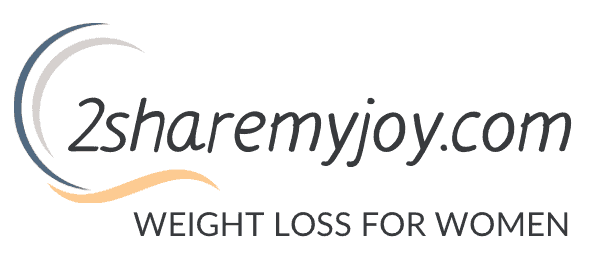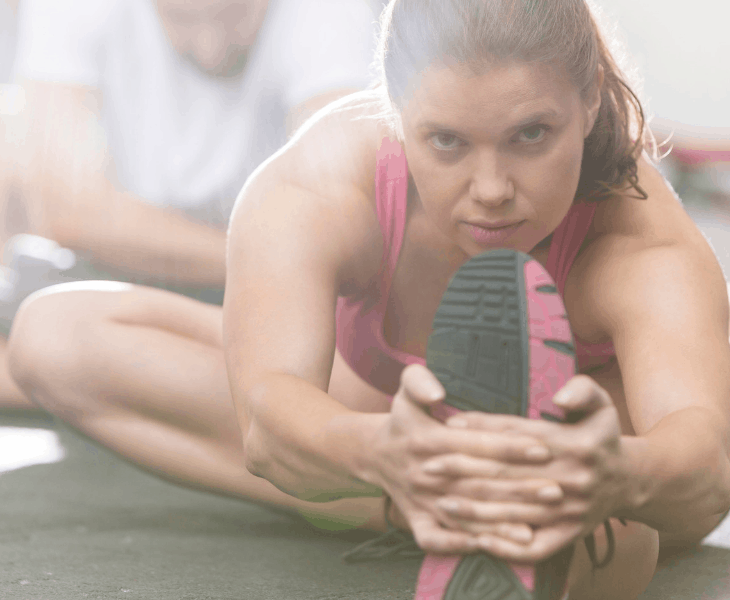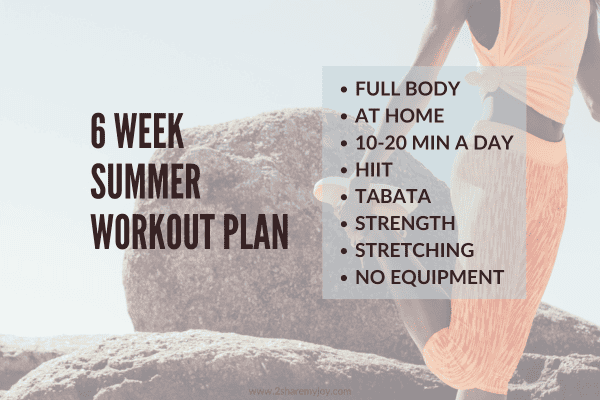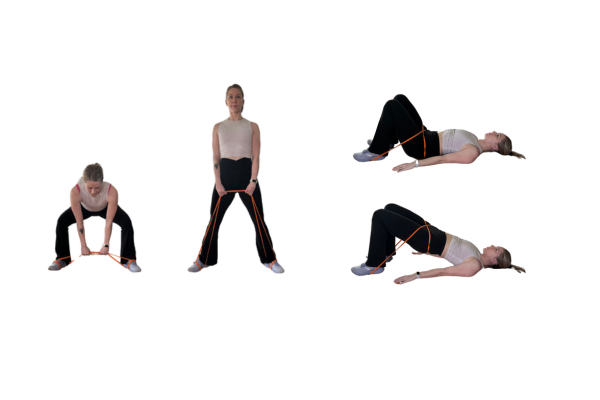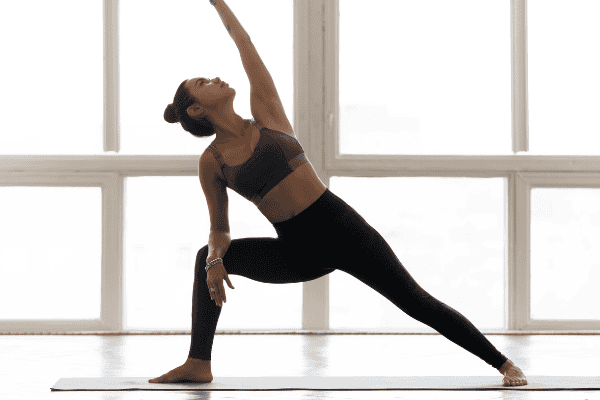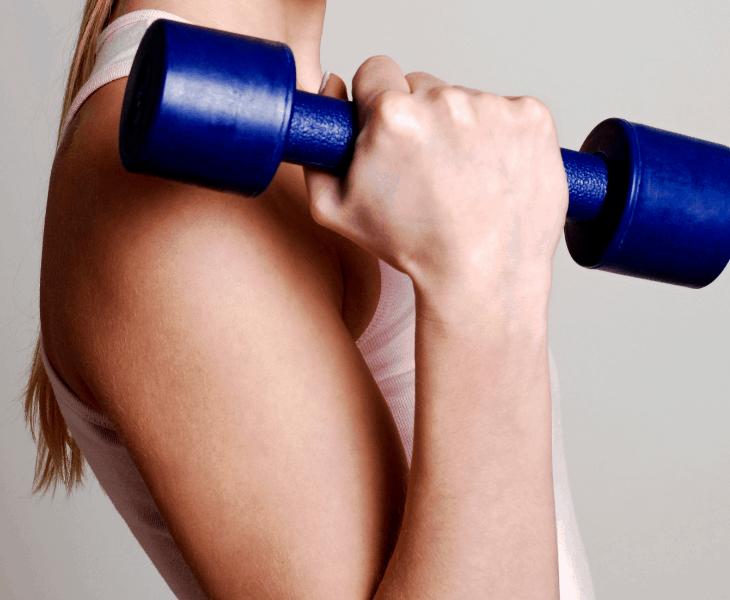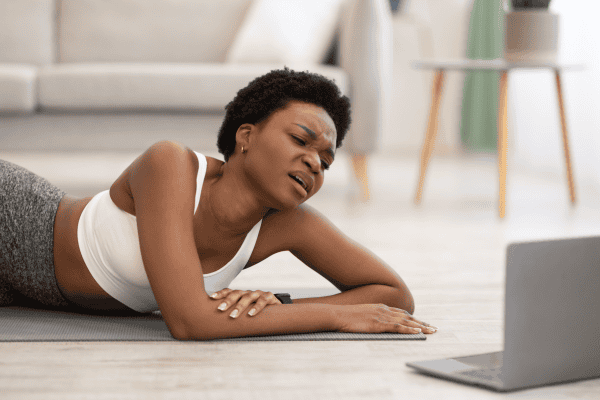30 Days Summer Body Challenge
This 30-day summer body challenge only takes 5-10 minutes and can be done in the morning, during lunch, or anytime you have a few minutes to spare.
It is designed to increase intensity to ensure progress in your fitness journey. Please read additional details below on how to adjust the challenge to your needs.

Benefits of the summer body challenge
Here are five benefits of participating in this summer body fitness challenge:
- Improved Physical Health: Regular exercise helps improve cardiovascular health, increase strength, and boost overall fitness levels.
- Weight Management: Engaging in a structured fitness challenge can help regulate weight by burning calories and building muscle, which in turn can enhance metabolism.
- Enhanced Mental Well-being: Exercise releases endorphins, which are chemicals in the brain that act as natural mood lifters. Consistent physical activity can reduce stress, anxiety, and symptoms of depression.
- Establishing Healthy Habits: A fitness challenge that lasts several weeks helps participants establish regular exercise routines that can turn into long-term habits, promoting sustained health benefits.
What you need for this challenge
A yoga mat may be more comfortable for some exercises in this summer fitness challenge but not necessary.
You don’t need any equipment, however, if it is too easy for you, you can add weights to the exercises.
What you can expect from this challenge
The 30 day summer body challenge starts easy and then increases intensity every week. This will ensure progress in your fitness to see results at the end of the challenge.
How to adjust the 30 Days Summer Body Challenge
You may feel like this is too easy; therefore, you can adjust the challenge to be a true test.
To do so, start with a higher number of repetitions. For example, if 10 is too easy, start with 15 or 20. Just make sure to add 1-3 repetitions each subsequent round to ensure progressive overload and fitness progress.
You can also hold dumbbells during the exercises to add an additional challenge.
If the exercises are too hard, simply do as many as you can, write them down, and aim to add one or two more the next time you perform them.
Related: 20 Tips to get Bikini Ready ASAP
30 Days Summer Body Challenge Calendar
Here is a rundown of the challenge exercise schedule for each day. Below the daily schedule you will find pictures of each exercises with instructions.
Be sure to stretch after and drink plenty of water.
Day 1: HIIT
10 jumping jacks, 10 high knees, 5 lateral jumps, 2 squat jumps
Day 2: UPPER BODY
10 Arm Circles, 3 Push ups, 3 triceps dip, 3 pike press
Day 3: LOWER BODY
5 Good mornings, 5 squats, 8 hip thrusts, 4 each side single leg deadlift
Day 4: CORE
5 Prone Y, 5 each flutter kicks, 5 Russian twist, 5 superman
Day 5: REST
stretching or yoga optional
Day 6: HIIT
13 jumping jacks, 13 high knees, 7 lateral jumps, 4 squat jumps
Day 7: UPPER BODY
11 Arm Circles, 4 Push ups, 4 triceps dip, 4 pike press
Day 8: LOWER BODY
7 Good mornings, 6 squats, 9 hip thrusts, 5 each side single leg deadlift
Day 9: CORE
6 Prone Y, 6 each flutter kicks, 6 Russian twist, 6 superman
Day 10: REST
stretching or yoga optional
Day 11: HIIT
15 jumping jacks, 15 high knees,10 lateral jumps, 5 squat jumps
Day 12: UPPER BODY
12 Arm Circles, 5 Push ups, 5 triceps dip, 5 pike press
Day 13: LOWER BODY
8 Good mornings, 8 squats, 10 hip thrusts, 6 each side single leg deadlift
Day 14: CORE
7 Prone Y, 8 each flutter kicks, 8 Russian twist, 7 superman
Day 15: REST
stretching or yoga optional
Day 16: HIIT
20 jumping jacks, 20 high knees, 12 lateral jumps, 7 squat jumps
Day 17: UPPER BODY
13 Arm Circles, 7 Push ups, 7 triceps dip, 7 pike press
Day 18: LOWER BODY
9 Good mornings, 9 squats, 12 hip thrusts, 8 each side single leg deadlift
Day 19: CORE
8 Prone Y, 10 each flutter kicks, 9 Russian twist, 9 superman
Day 20: REST
stretching or yoga optional
Day 21: HIIT
22 jumping jacks, 22 high knees, 14 lateral jumps, 8 squat jumps
Day 22: UPPER BODY
15 Arm Circles, 8 Push ups, 8 triceps dip, 8 pike press
Day 23: LOWER BODY
12 Good mornings, 10 squats, 13 hip thrusts, 10 each side single leg deadlift
Day 24: CORE
10 Prone Y, 12 each flutter kicks, 12 Russian twist, 12 superman
Day 25: REST
stretching or yoga optional
Day 26: HIIT
25 jumping jacks, 25 high knees, 16 lateral jumps, 10 squat jumps
Day 27: UPPER BODY
15 Arm Circles, 10 Push ups, 10 triceps dip, 10 pike press
Day 28: LOWER BODY
15 Good mornings, 12 squats, 15 hip thrusts, 12 each side single leg deadlift
Day 29: REST
stretching optional
Day 30: CORE
12 Prone Y, 15 each flutter kicks, 15 Russian twist, 15 superman
30 Days Summer Body Challenge Exercises
HIIT
jumping jacks

To perform a jumping jack, start by standing straight with your feet together and arms at your sides. As you jump, spread your legs to be wider than shoulder-width apart while simultaneously raising your arms above your head.
Quickly reverse the motion by jumping again, bringing your legs back together and arms to your sides. You can also do it the other way around. Repeat this action continuously, maintaining a rhythmic pace for the desired number of repetitions or time interval.
high knees

High knees are a dynamic exercise that boosts heart rate and enhances lower body strength. Start by standing with your feet hip-width apart, then quickly lift one knee as high as possible towards your chest while pumping your arms, then switch to the other knee in a running motion.
Continue alternating knees rapidly, maintaining an upright posture and engaging your core throughout the exercise.
lateral jumps

Lateral jumps are a plyometric exercise that enhances agility and lateral movement. Start by standing with your feet together and knees slightly bent.
Jump to the side as far as you can, landing on the opposite foot while maintaining balance, then immediately jump back to the starting position. Repeat the movement side to side, keeping your movements quick and controlled.
squat jumps

Jump squats are an explosive exercise that targets the lower body and helps improve power and agility. Begin in a standard squat position with feet shoulder-width apart, lowering your hips back and down while keeping your chest up and back straight.
Explosively jump up from the lowest point, extending your legs fully and swinging your arms for momentum, then land softly and sink back into the squat position to prepare for the next jump. Repeat for the desired number of repetitions or duration.
CORE
Prone Y

Prone Ys are an exercise that targets the muscles of the upper back and shoulders, improving posture and shoulder stability. Lie face down on the floor or a mat with your arms extended overhead in a ‘Y’ shape, thumbs pointing upwards.
Lift your arms and chest slightly off the ground by squeezing your shoulder blades together, hold for a moment, then lower back down. Repeat for the desired number of repetitions, focusing on controlled movements and maintaining neck neutrality.
flutter kicks

Flutter kicks are a core-strengthening exercise that also targets the lower abdominal muscles and hip flexors. Begin by lying on your back with your legs extended and hands under your buttocks to support your hips.
Alternately lift your legs up and down in a quick, controlled motion, keeping them straight and elevated off the ground. Maintain a steady pace and keep your core engaged throughout the exercise to minimize strain on your lower back.
Russian twist

The Russian Twist is an effective exercise for strengthening the obliques and entire core. Sit on the floor with your knees bent and feet lifted slightly off the ground, leaning back slightly to create a V-shape with your torso.
Clasp your hands together and smoothly rotate your upper body from side to side, touching the floor next to your hip with your hands on each twist. Maintain balance and keep your movements controlled to engage the core muscles throughout the exercise.
superman

The Superman exercise is designed to strengthen the lower back, glutes, and hamstrings. Lie face down on the floor or a mat with your arms extended in front of you and legs straight.
Simultaneously lift your arms, legs, and chest off the floor, holding the position for a few seconds before slowly lowering back down. Repeat the movement, ensuring to keep your head and neck in a neutral position throughout the exercise.
LOWER BODY
Good mornings

Good Mornings are a strength exercise focusing on the lower back, hamstrings, and glutes. Start by standing with your feet hip-width apart and a slight bend in your knees, placing your hands on the side of your head.
Keeping your back straight and core engaged, hinge forward at the hips until your upper body is almost parallel to the floor, then return to the starting position. Maintain a slow and controlled movement throughout to avoid strain on your lower back.
squats

Bodyweight squats are a fundamental exercise that targets the legs and glutes while also engaging the core. Start by standing with your feet shoulder-width apart, toes slightly pointed out, and hands at your chest or extended in front for balance.
Lower your body by bending your knees and pushing your hips back as if sitting into a chair, keeping your chest upright and knees tracking over your toes, then press through your heels to return to the starting position. Repeat for the desired number of repetitions, ensuring to keep your movements controlled and posture aligned.
hip thrusts

Floor hip thrusts are a variation of the standard hip thrust, focusing on strengthening the glutes without the need for a bench. Start by lying on your back on the floor with your knees bent and feet flat, positioned hip-width apart.
Press your heels into the floor and lift your hips upward, squeezing your glutes at the top to form a straight line from your knees to your shoulders. Lower your hips back to the ground in a controlled motion and repeat for the desired number of repetitions, keeping your movements smooth and steady.
single leg deadlift

The single-leg deadlift without weights is a balance and strength exercise that targets the hamstrings, glutes, and core. Begin by standing on one leg, with the other leg slightly bent behind you for balance.
Slowly hinge forward at the hips, extending your free leg behind you for balance, and reach your arms towards the ground, keeping your back straight and hips square. Reverse the motion to return to the standing position, maintaining control and balance throughout the movement. Repeat for the desired number of repetitions before switching to the other leg.
UPPER BODY
Arm Circles

Arm circles are a simple exercise that targets the shoulders, upper back, and arms, requiring no equipment. Start by standing with your feet shoulder-width apart and extend your arms straight out to your sides, parallel to the ground.
Slowly rotate your arms in small circles, gradually increasing the size of the circles, then reverse the direction after a set period. Keep your movements controlled and your posture upright throughout the exercise to effectively engage the shoulder muscles.
Push ups

Push-ups are a classic bodyweight exercise that strengthens the chest, shoulders, triceps, and core. Begin in a plank position with your hands slightly wider than shoulder-width apart and your body forming a straight line from your heels to your head.
Lower your body by bending your elbows until your chest nearly touches the floor, then push back up to the starting position by extending your arms. Keep your core engaged and your back straight throughout the movement to maximize effectiveness and reduce the risk of injury.
triceps dip

Triceps dips on the floor are a modified version of the exercise that targets the triceps without the need for equipment. Sit on the floor with your knees bent and feet flat, placing your hands behind you under your shoulders with fingers pointing towards your feet.
Lift your hips off the ground to enter the starting position, then bend your elbows to lower your body towards the floor before pushing back up by straightening your arms. Keep your movements controlled and focus on using your triceps to lift and lower your body.
pike press

The pike press is an upper body exercise that focuses on strengthening the shoulders, triceps, and upper back. Start in a pike position by placing your hands and feet on the floor, hips high in the air, so your body forms an upside-down V.
Lower your head towards the ground by bending your elbows, keeping them tucked in close to your body, then press back up to the starting position. Ensure your core is engaged and your neck remains neutral throughout the exercise to maximize effectiveness and safety.
Be sure to also check out these summer posts:
